- Joined
- Jul 27, 2009
- Messages
- 3,971
The Ideal cut grade was brought to the forefront of diamond quality grading in the modern age by the American Gem Society (AGS) in the mid 1990’s. It was at this time that the AGS established the American Gem Society Laboratories (AGSL), with a strong emphasis on cut quality analysis. In 2005 AGSL released their groundbreaking light performance grading system using advanced light ray tracing and for the first time provided an accurate, consistent and repeatable scientific cut grade system for diamonds. In the same year GIA released its first cut grade system for round diamonds; one that is parameter-based and relatively broad and forgiving. In 2022 GIA acquired the light performance grading technology from AGS and now provides AGS Ideal addendum reports on qualifying diamond sent in for a GIA report. The clear implication is that GIA recognizes its own top grade of Excellent to be overly broad, and now provides a means for shoppers to separate the truly excellent cuts from the rest of the diamonds in the Excellent category. Another even bigger implication pertains to the future of fancy shape cut grading.
Key Takeaways:
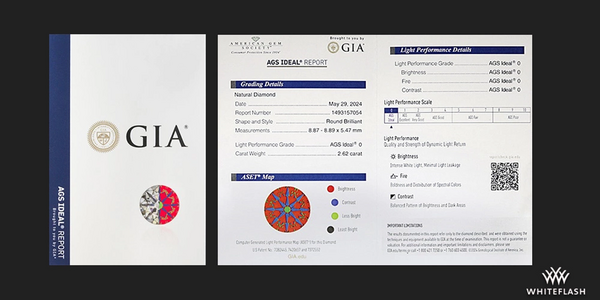
GIA rolled out the AGS Ideal addendum report shortly after the acquisition of the technology, signaling that the AGS light performance grading system would be the way forward for GIA in this vital area of diamond grading. Because the technology is also applicable to fancy shape diamonds, and because cut quality of fancy shapes is the new frontier in diamond grading, it is reasonable to assume we will eventually see GIA rolling out the system more broadly.
Currently the only overall cut grade provided on a GIA report is for the standard round brilliant. However, qualifying fancy shape diamonds are also eligible for the AGS Ideal addendum report. This further suggests that GIA intends to use the AGS system as it rolls out fancy shape cut grading more broadly. At the present time, only those diamonds (rounds and fancies) that pass the AGS ray tracer as Ideal (AGS 0) are eligible for an addendum report. That is, GIA is not issuing cut grades of AGS1 or lower on any diamonds at this time.
GIA Excellent Cut is Demonstrably Broad
A straightforward way to see how broad GIA Ex is compared to AGS Ideal is to look at their respective parametric grading charts. While the AGS system is light performance based and does not rely on charts, the charts provide some guidance on potential candidates for the top grade based upon averaged parameters. The AGS Ideal candidates are colored in red below while the much broader area outlined in black are potential GIA Ex candidates. You can also see the range of probable AGS grades contained within the GIA Ex range – down to AGS 5 on the 0-10 AGS scale where zero is Ideal.
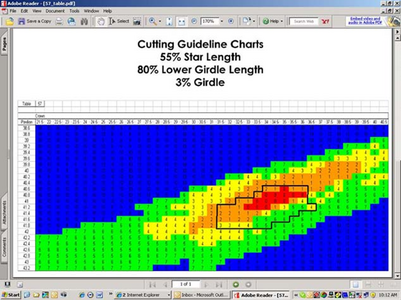
Light Performance Imaging Reveals Deficiencies
Using advanced light performance imaging it is easy to see that GIA Excellent cut diamonds at the margins have deficiencies such as light leakage, too little or too much contrast, painting and digging, and other failings that can result in significantly diminished performance. The following two GIA EX diamonds illustrate a range of deficiencies contained with the grade.

GIA EX with lack of precision and painting

GIA EX with light leakage and dug out upper girdle facets
GIA Report with AGS Ideal Addendum
As long as AGS Laboratories was in operation and as well respected as their cut grading is, there was always lingering uncertainty in some corners of the market that their color and clarity grading was fully on par with GIA. In many cases shoppers would feel compelled to invest in both reports, and in cases where normal deviation occurred between them, consumer confusion would result. Today, that dilemma has been solved. In a “best of both worlds” development shoppers can now find GIA reports with AGS Ideal light performance addendum reports. The submitting client can now request the addendum report on any qualifying diamond that is sent to GIA for a grading. The cut grade does not appear on the GIA report, but is crossed referenced in a separate AGS Ideal addendum report. The addendum also includes an ASET light map of the diamond. The grading report and addendum can both be accessed on the GIA Report Check website.
A GIA diamond with AGS Ideal addendum is assurance that the cut quality is at the top of the scale, or to say it another way, right in the heart of the GIA Excellent range - not at the periphery where demonstrable light performance issues exist in the GIA parametric grading structure.
The Super Ideal – An Island within the GIA Ex Ocean
We have seen how the AGS Ideal grade is a narrow subset of GIA Ex, demonstrating that the GIA Ex grade is much broader and contains diamonds with demonstrable light performance issues. But there is a further subset of the best AGS Ideal cuts that creates an even more dramatic illustration of how broad the GIA Ex grade is compared to the very best precision cutting.
The main difference between an AGS Ideal and a bona fide Super Ideal, is in 3D precision (aka optical precision or optical symmetry). This is not something that AGS grades for, but makes a difference in terms of craftsmanship and optimization of of the facet design. A true super ideal should be accompanied by the light performance images that conclusively document the level of precision, such as ASET, IdealScope and Hearts and Arrows images.


AGS Ideal – 3D Analysis
The AGS light performance system uses an accurate 3D scan to create a model of the diamond and all the facets including angles and pointing directions (azimuth). This is run through a computer ray tracing program that illuminates the model with 30,000 virtual light rays and measures brightness, contrast, dispersion (fire), and light leakage. A grading structure is then built for each shape based upon the characteristics found in the very best specimens of each shape.
While making decisions about what constitutes the best specimen requires some subjectivity, GIA has world-class ability to do extensive observational surveys and to make statistically valid determinations.
The Future of Fancy Shape Cut Grading
The biggest void in diamond grading today is cut grading of fancy shapes. Because light performance is the sum contribution of all facets in three dimensions, and because non-round shapes have more parameters at play (including but not limited to length/width ratio), they are more complex by definition. And because many, if not most, fancy shapes have multiple variations or modifications, the level of complexity quickly reaches a point where ray tracing is the only feasible method for measuring and grading cut quality. GIA now has that capability, and with their reach and reputation, a unique opportunity to vault to the lead of the fancy shape cut grading space.
Conclusion
GIA invented the diamond grading system in the mid twentieth century and have earned the best reputation and greatest reach of any gem laboratory for accuracy and consistency. They were slow to move into the cut grading space in a major way and were very conservative in rolling out their cut grade system for round diamonds, structuring their top grade of Excellent in an overly broad manner. But with the acquisition of AGS light performance technology they have now created a subset of the best in the GIA EX category by issuing the AGS Ideal addendum reports on those diamonds which qualify. And more importantly, they now have the foundation with which to not only compete, but to dominate in the fancy shape cut grading space.
The acquisition and implementation of AGS light performance technology solves two problems for GIA, and in time may be seen as one of the most brilliant innovations in GIA’s long and storied history.
FAQs
Is a diamond with a GIA Ex cut grade the best you can get?
Not necessarily. The GIA Ex cut grade is very broad, containing many diamonds at the margins with appreciable light performance deficits. The AGS Ideal grade is a more rigorous standard.
How do I get an AGS Ideal report?
The AGS Laboratories was closed in 2022 when GIA acquired the lab, its cut team, and its technologies. There are still some diamonds in the market have full AGS reports from before that time, but GIA now provides an AGS Ideal addendum report on qualifying diamonds.
Does GIA provide AGS Ideal reports on fancy shape diamonds like oval and emerald cut?
Yes they do, and other non-round shapes as well. But they are hard to find in the market at the present time.
What is a Super Ideal cut diamond?
A super ideal is a diamond that has a cut grade of AGS Ideal and also has proven optical precision including true hearts and arrows patterning.
When will GIA start putting overall cut grade on fancy shape diamonds?
It is hard to say when that will happen, but there is good reason to believe it will be coming. With the acquisition of AGS light performance technology, GIA now has the foundation to provide accurate and consistent scientifically vetted light performance cut grades on all shapes.
What are your thoughts on the AGS Ideal addendum report? Were you aware that fancy shape diamonds are eligible? What do you think this means for the future of cut grading and the value of a GIA report?
Please share your thoughts below.
Key Takeaways:
- GIA Excellent is a broad and forgiving grade range.
- AGS Ideal light performance grading is much more rigorous
- GIA acquired AGS technology in 2022
- GIA now offers an AGS Ideal addendum reports on rounds and fancy shapes
- AGS Ideal with proven optical precision is known as Super Ideal
- GIA is likely to roll out fancy shape cut grading using AGS technology

GIA rolled out the AGS Ideal addendum report shortly after the acquisition of the technology, signaling that the AGS light performance grading system would be the way forward for GIA in this vital area of diamond grading. Because the technology is also applicable to fancy shape diamonds, and because cut quality of fancy shapes is the new frontier in diamond grading, it is reasonable to assume we will eventually see GIA rolling out the system more broadly.
Currently the only overall cut grade provided on a GIA report is for the standard round brilliant. However, qualifying fancy shape diamonds are also eligible for the AGS Ideal addendum report. This further suggests that GIA intends to use the AGS system as it rolls out fancy shape cut grading more broadly. At the present time, only those diamonds (rounds and fancies) that pass the AGS ray tracer as Ideal (AGS 0) are eligible for an addendum report. That is, GIA is not issuing cut grades of AGS1 or lower on any diamonds at this time.
GIA Excellent Cut is Demonstrably Broad
A straightforward way to see how broad GIA Ex is compared to AGS Ideal is to look at their respective parametric grading charts. While the AGS system is light performance based and does not rely on charts, the charts provide some guidance on potential candidates for the top grade based upon averaged parameters. The AGS Ideal candidates are colored in red below while the much broader area outlined in black are potential GIA Ex candidates. You can also see the range of probable AGS grades contained within the GIA Ex range – down to AGS 5 on the 0-10 AGS scale where zero is Ideal.

Light Performance Imaging Reveals Deficiencies
Using advanced light performance imaging it is easy to see that GIA Excellent cut diamonds at the margins have deficiencies such as light leakage, too little or too much contrast, painting and digging, and other failings that can result in significantly diminished performance. The following two GIA EX diamonds illustrate a range of deficiencies contained with the grade.

GIA EX with lack of precision and painting

GIA EX with light leakage and dug out upper girdle facets
GIA Report with AGS Ideal Addendum
As long as AGS Laboratories was in operation and as well respected as their cut grading is, there was always lingering uncertainty in some corners of the market that their color and clarity grading was fully on par with GIA. In many cases shoppers would feel compelled to invest in both reports, and in cases where normal deviation occurred between them, consumer confusion would result. Today, that dilemma has been solved. In a “best of both worlds” development shoppers can now find GIA reports with AGS Ideal light performance addendum reports. The submitting client can now request the addendum report on any qualifying diamond that is sent to GIA for a grading. The cut grade does not appear on the GIA report, but is crossed referenced in a separate AGS Ideal addendum report. The addendum also includes an ASET light map of the diamond. The grading report and addendum can both be accessed on the GIA Report Check website.
A GIA diamond with AGS Ideal addendum is assurance that the cut quality is at the top of the scale, or to say it another way, right in the heart of the GIA Excellent range - not at the periphery where demonstrable light performance issues exist in the GIA parametric grading structure.
The Super Ideal – An Island within the GIA Ex Ocean
We have seen how the AGS Ideal grade is a narrow subset of GIA Ex, demonstrating that the GIA Ex grade is much broader and contains diamonds with demonstrable light performance issues. But there is a further subset of the best AGS Ideal cuts that creates an even more dramatic illustration of how broad the GIA Ex grade is compared to the very best precision cutting.
The main difference between an AGS Ideal and a bona fide Super Ideal, is in 3D precision (aka optical precision or optical symmetry). This is not something that AGS grades for, but makes a difference in terms of craftsmanship and optimization of of the facet design. A true super ideal should be accompanied by the light performance images that conclusively document the level of precision, such as ASET, IdealScope and Hearts and Arrows images.

An AGS Ideal with imperfect optical precision (not super ideal)

Super Ideal – AGS Ideal with perfect optical precision
AGS Ideal – 3D Analysis
The AGS light performance system uses an accurate 3D scan to create a model of the diamond and all the facets including angles and pointing directions (azimuth). This is run through a computer ray tracing program that illuminates the model with 30,000 virtual light rays and measures brightness, contrast, dispersion (fire), and light leakage. A grading structure is then built for each shape based upon the characteristics found in the very best specimens of each shape.
While making decisions about what constitutes the best specimen requires some subjectivity, GIA has world-class ability to do extensive observational surveys and to make statistically valid determinations.
The Future of Fancy Shape Cut Grading
The biggest void in diamond grading today is cut grading of fancy shapes. Because light performance is the sum contribution of all facets in three dimensions, and because non-round shapes have more parameters at play (including but not limited to length/width ratio), they are more complex by definition. And because many, if not most, fancy shapes have multiple variations or modifications, the level of complexity quickly reaches a point where ray tracing is the only feasible method for measuring and grading cut quality. GIA now has that capability, and with their reach and reputation, a unique opportunity to vault to the lead of the fancy shape cut grading space.
Conclusion
GIA invented the diamond grading system in the mid twentieth century and have earned the best reputation and greatest reach of any gem laboratory for accuracy and consistency. They were slow to move into the cut grading space in a major way and were very conservative in rolling out their cut grade system for round diamonds, structuring their top grade of Excellent in an overly broad manner. But with the acquisition of AGS light performance technology they have now created a subset of the best in the GIA EX category by issuing the AGS Ideal addendum reports on those diamonds which qualify. And more importantly, they now have the foundation with which to not only compete, but to dominate in the fancy shape cut grading space.
The acquisition and implementation of AGS light performance technology solves two problems for GIA, and in time may be seen as one of the most brilliant innovations in GIA’s long and storied history.
FAQs
Is a diamond with a GIA Ex cut grade the best you can get?
Not necessarily. The GIA Ex cut grade is very broad, containing many diamonds at the margins with appreciable light performance deficits. The AGS Ideal grade is a more rigorous standard.
How do I get an AGS Ideal report?
The AGS Laboratories was closed in 2022 when GIA acquired the lab, its cut team, and its technologies. There are still some diamonds in the market have full AGS reports from before that time, but GIA now provides an AGS Ideal addendum report on qualifying diamonds.
Does GIA provide AGS Ideal reports on fancy shape diamonds like oval and emerald cut?
Yes they do, and other non-round shapes as well. But they are hard to find in the market at the present time.
What is a Super Ideal cut diamond?
A super ideal is a diamond that has a cut grade of AGS Ideal and also has proven optical precision including true hearts and arrows patterning.
When will GIA start putting overall cut grade on fancy shape diamonds?
It is hard to say when that will happen, but there is good reason to believe it will be coming. With the acquisition of AGS light performance technology, GIA now has the foundation to provide accurate and consistent scientifically vetted light performance cut grades on all shapes.
What are your thoughts on the AGS Ideal addendum report? Were you aware that fancy shape diamonds are eligible? What do you think this means for the future of cut grading and the value of a GIA report?
Please share your thoughts below.

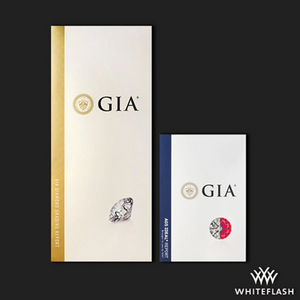
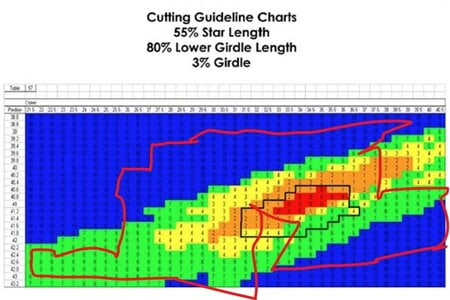
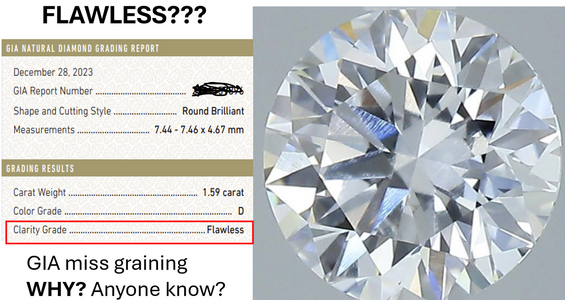
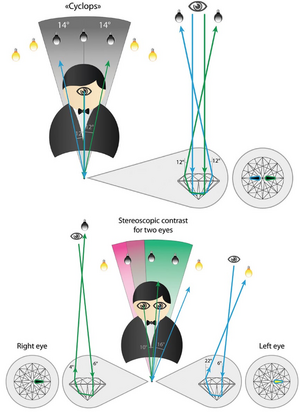
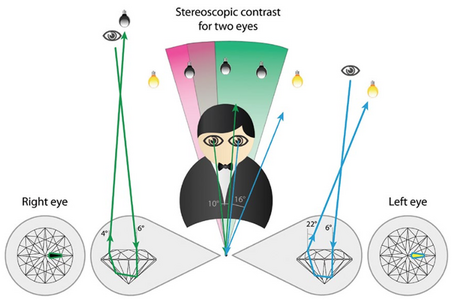
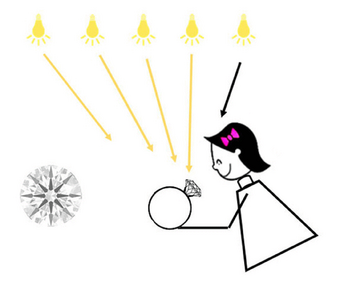


300x240.png)